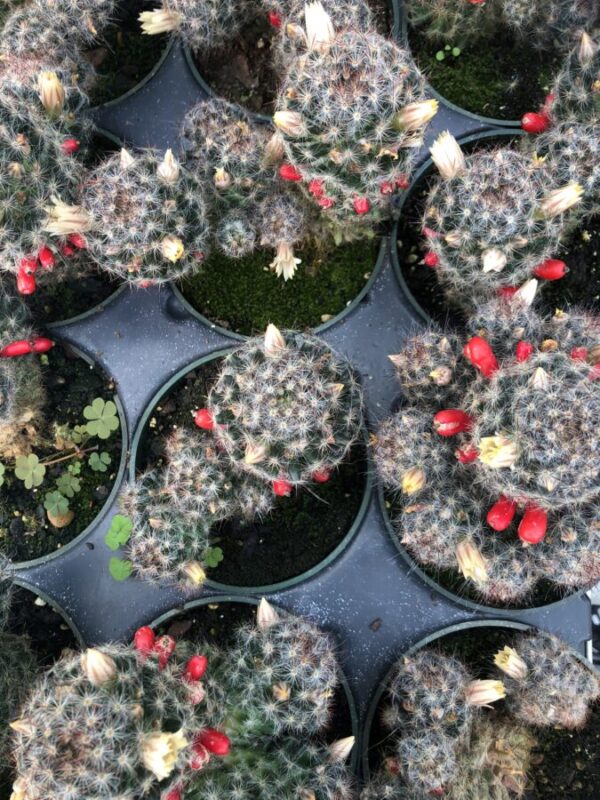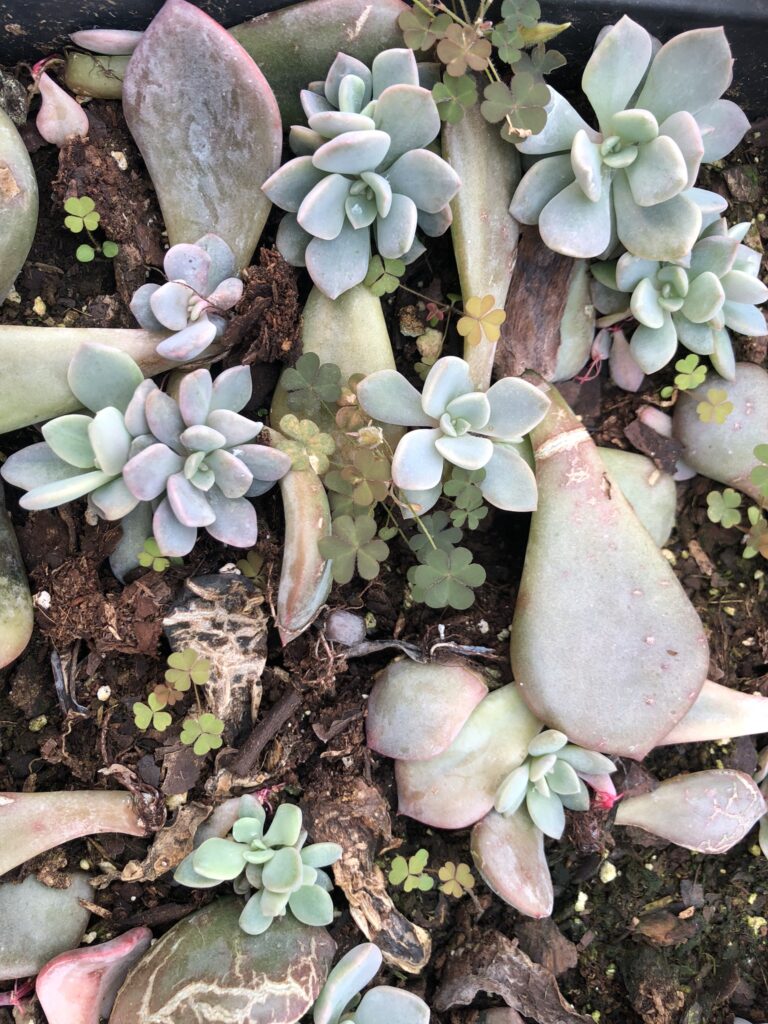On an island where water conservation is a national pastime, planting succulents would seem to be the ideal way to add color and interest to your garden and conserve water at the same time.
But just because a plant thrives with minimal water does not necessarily mean that it would make a suitable addition to your garden – you must also consider whether it is an indigenous or an invasive species.
What is an Indigenous Species?
Any species occurring naturally in an environment is said to be “endemic” – this includes both native and endemic species.
An endemic species is one that arrived in Bermuda via natural processes and then adapted to Bermuda’s local conditions in such a way that it has become a unique species that cannot be found anywhere else on Earth (an example is the Bermuda Palmetto).
A native species is one that arrived in Bermuda via natural processes (without human intervention) but can also be found elsewhere in the world.
Examples of indigenous succulents include Beach Lobelia, Ink Berry Scaevola, Prickly Pear, Seaside Heliotrope, Seaside Purslane, Spanish Bayonet, and Yucca.
What is an Invasive Species?
According to An Illustrated Guide to Bermuda’s Plants published by The Ministry of Public Works, an invasive species is one that has entered our ecosystem, and has the potential to “disrupt the natural balance, reduce biodiversity, degrade habitats, alter genetic diversity, and transmit exotic diseases to native species.”
Common examples of invasive succulents include Barbados Gooseberry, Snake Plant (also known as Mother-In-Laws Tongue), Night Blooming Cereus, and Dragon Fruit.
 What is the difference between a Cactus and a Succulent?
What is the difference between a Cactus and a Succulent?
In short – all cacti are succulents but not all succulents are cacti.
A succulent is defined as a fleshy plant that belongs to one of many diverse families including cactus, aloe, agave, and yucca.
A cactus, however, is a particular type of succulent that typically has areoles, which are small, round, cushion-like structures on their stems. From these areoles, cacti produce spines, flowers, and new stems.
TIPS FOR PROPAGATING SUCCULENTS
Although you might assume that it would be simple to grow succulents in our sub-tropical climate, succulents thrive predominantly in arid and semi-arid regions of the world (which normally experience extreme heat and dryness) – and not all varieties do well in Bermuda’s chilly winters and salty atmosphere.
I visited with Ms. Julie Greaves of Aberfeldy Nurseries Ltd. to get some expert tips for propagating and caring for succulents at home.
How do you propagate a succulent?
“Depending on the variety, succulents are propagated from a single leaf, a stem cutting, or by subdividing baby plants from a mature plant,” says Ms. Greaves. “But in many instances, (such as with a Jade plant) all you need to do is lay one healthy leaf on top of soil and it will start to produce roots within 10 days.”
“If you are going to try to root a plant from a stem cutting, it is important to let the cutting air dry for a couple of days to allow the severed end of the stem to callus over before planting it in soil to prevent the end from rotting,” she explained.
How do you choose the right location for your succulent?
“In general, it’s best to place your succulents in a location that receives plenty of bright, indirect sunlight. If possible, choose a place where they receive morning sun and afternoon shade.”
“Also, keep in mind that unless you are growing something very hardy, like Yucca or Pricky Pear, you might want to consider growing them in pots so that you can bring them indoors during a cold snap to protect them from damage,” she said.
How important is soil composition and drainage for succulents?
Succulents are susceptible to root rot if their roots sit in water for too long so you should choose a shallow pot with drainage holes at the bottom to allow excess water to escape. Ms. Greaves recommends placing some pea gravel in the bottom of the pot and then topping it up with a well-draining potting mix.
How often should you water a succulent?
“While succulents are drought-tolerant, they do still need some water,” says Ms. Greaves.
“Knowing how often to water any plant is the hardest thing to get right because how much water a plant needs depends entirely on “the environment” in which you situate the plant. With succulents, ideally, you want to let the soil dry out completely between waterings, and water only when the top inch of soil feels dry to the touch.”
What sort of precautions should you take when handling cacti?
“It’s a good idea to wear a pair of gloves when handling any plant,” says Ms. Greaves, “some cacti can have spines so small that they are almost impossible to see and even harder to remove if they become embedded in your finger.”
“If you do prick your finger, the best way to extract a cactus spine is with duct tape. You should avoid using tweezers as you may leave part of the spine in the skin if you squeeze too firmly,” she explained.
How often does a cactus usually flower?
“Depending on which hemisphere a succulent originally came from, it may produce flowers when the days are longer – and it may not produce flowers until the days grow shorter.”
“However, if a plant is “feeling stressed” it may also produce a flower out of season to produce a seed (and thereby perpetuate the species),” she added.
With these guidelines in mind, you’ll be well-equipped to nurture vibrant succulents in Bermuda’s balmy, moisture-rich climate. It’s worth noting that while cacti often demand minimal upkeep, many succulents benefit from shelter during the island’s winter storms. Moreover, only select species like Prickly Pear and Seaside Purslane truly flourish in the salty air of coastal locales.
By heeding Ms. Julie Greaves’ insights on propagation, positioning, and nurturing, we can fashion an eco-conscious, effortlessly maintained garden that enhances any island home.

